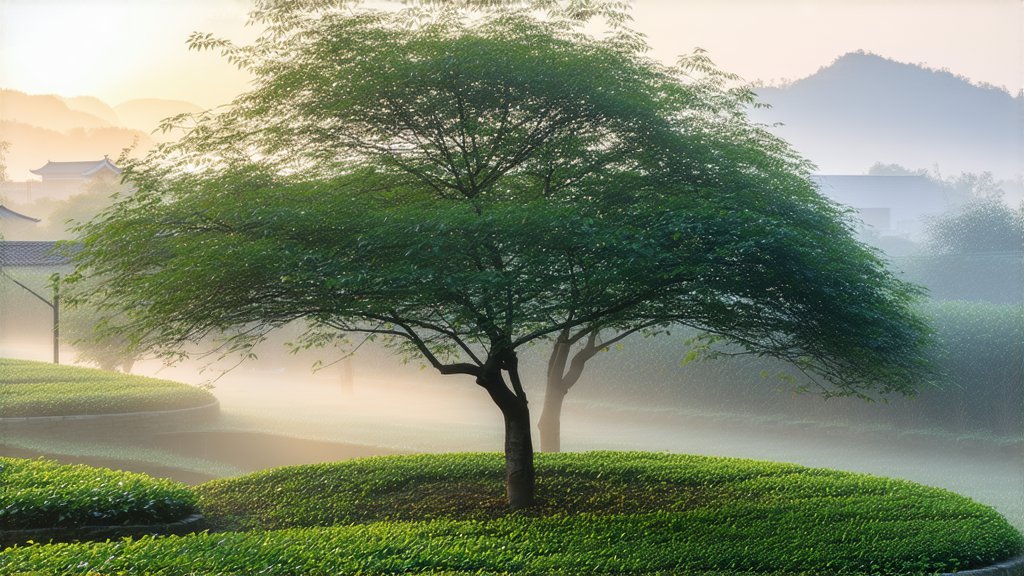
Nestled in the heart of Hunan Province lies Junshan County, a place synonymous with one of China's most revered yet lesser-known tea treasures—Junshan Yinzhen. This exquisite yellow tea variety has been cherished for centuries, not only for its unique flavor profile but also for its rich historical significance and meticulous production process. In this exploration, we delve into the captivating world of Junshan Yinzhen, unraveling its origins, varieties, intricate manufacturing techniques, and the art of its appreciation.
A Journey Through Time: The Historical Tapestry of Junshan Yinzhen
The tale of Junshan Yinzhen begins in ancient China, during the Tang Dynasty (618-907 AD), when it was first cultivated in the pristine mountains surrounding Dongting Lake. Legend has it that the tea was discovered by accident when a batch of green tea left to oxidize developed a distinctive golden hue and a sweeter taste, marking the birth of what we now know as yellow tea. Over time, Junshan Yinzhen gained royal patronage, becoming a favorite among emperors for its delicate aroma and smooth texture. Its name, "Yinzhen," translates to "silver needle," a poetic nod to the fine, hair-like appearance of its downy buds.
Varietals and Distinctions: Exploring the Uniqueness of Junshan Yinzhen
Junshan Yinzhen stands out among other Chinese teas due to its strict adherence to traditional cultivation methods and the specific geographical conditions required for its growth. The tea bushes are predominantly of the Camellia sinensis var. sinensis species, known for their robust flavor and higher antioxidant content. Unlike green or black teas, which undergo extensive rolling and oxidation processes, Junshan Yinzhen is minimally processed, retaining more of its natural character and nutritional benefits.
There are two primary grades of Junshan Yinzhen: Superior and First-Class. The Superior grade consists solely of tender, downy buds picked before the leaves have fully unfurled, resulting in a lighter, more refined taste. First-Class, on the other hand, includes both buds and young leaves, offering a slightly fuller body while still maintaining the characteristic subtlety of the tea.
Crafting Perfection: The Art of Junshan Yinzhen Production
The creation of Junshan Yinzhen is an art form passed down through generations, demanding precision and patience. The journey from leaf to cup encompasses several stages:
-
Plucking: Only the finest buds and young leaves are selected, typically in early spring when they are at their most tender and nutrient-rich.
-
Fixing: Unlike green tea's high-heat fixing, Junshan Yinzhen undergoes a gentle steaming or pan-frying process to halt enzymatic activity partially, allowing for controlled oxidation.
-
Sweating: This crucial step involves wrapping the tea in paper or cloth to encourage slow oxidation under controlled humidity and temperature conditions. This process can last anywhere from hours to days, depending on the desired level of maturity.
-
Drying: Finally, the tea is gently dried to remove excess moisture, ensuring longevity without compromising flavor or aroma.
This meticulous process results in a tea that boasts a pale yellow liquor with a sweet, mellow flavor profile, often described as having notes of honey, chestnuts, and a hint of orchid.
The Dance of Senses: Savoring Junshan Yinzhen
To truly appreciate Junshan Yinzhen, one must engage all senses in the tasting experience. Here’s a guide to savoring this golden elixir:
-
Visual Appreciation: Observe the dry leaves, noting their slender shape and silvery sheen. Upon infusion, watch as they unfurl gracefully, revealing a bright yellow hue in the water.
-
Aromatic Evaluation: Inhale deeply before sipping to capture the delicate fragrance, which should evoke fresh hay, subtle sweetness, and a whisper of floral undertones.
-
Tasting: Take a small sip, allowing the tea to coat your palate. Notice the initial sweetness that gradually gives way to a mildly vegetal aftertaste, with a lingering finish that leaves a cleansing sensation.
-
Texture and Mouthfeel: Pay attention to the silky smoothness of the tea as it glides over your tongue, a testament to its high-quality processing.
-
Aftertaste: Reflect on the lasting impression left behind, which should be refreshing and devoid of any bitterness or astringency.
In conclusion, Junshan Yinzhen represents not just a tea but a cultural legacy, embodying the harmony between nature's bounty and human craftsmanship. Its history, unique characteristics, and the artistry involved in its production make it a gem worth discovering for any tea enthusiast seeking an authentic taste of China's tea heritage. As you embark on your own journey with Junshan Yinzhen, may each cup serve as a gateway to a deeper understanding and appreciation of this golden delicacy.